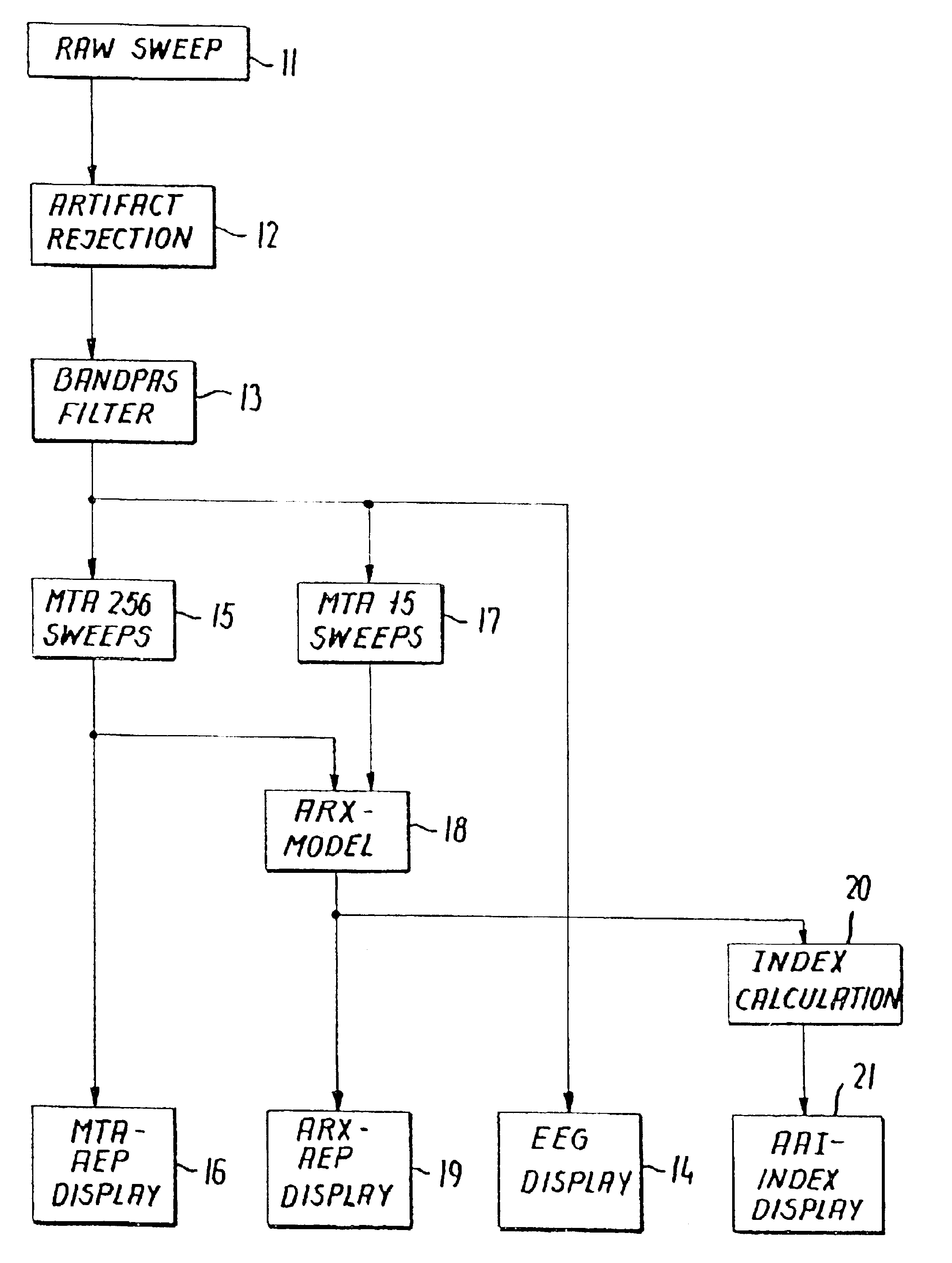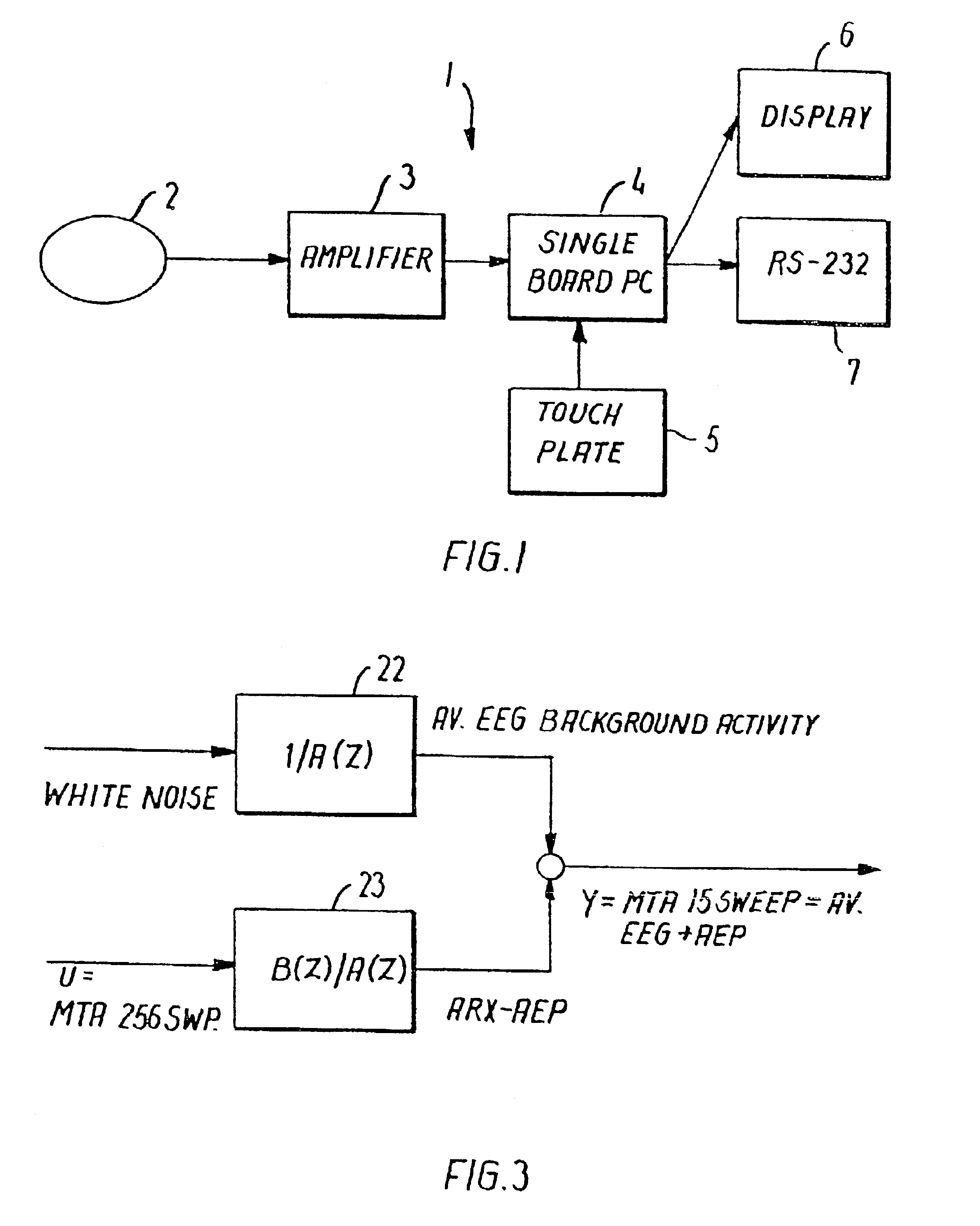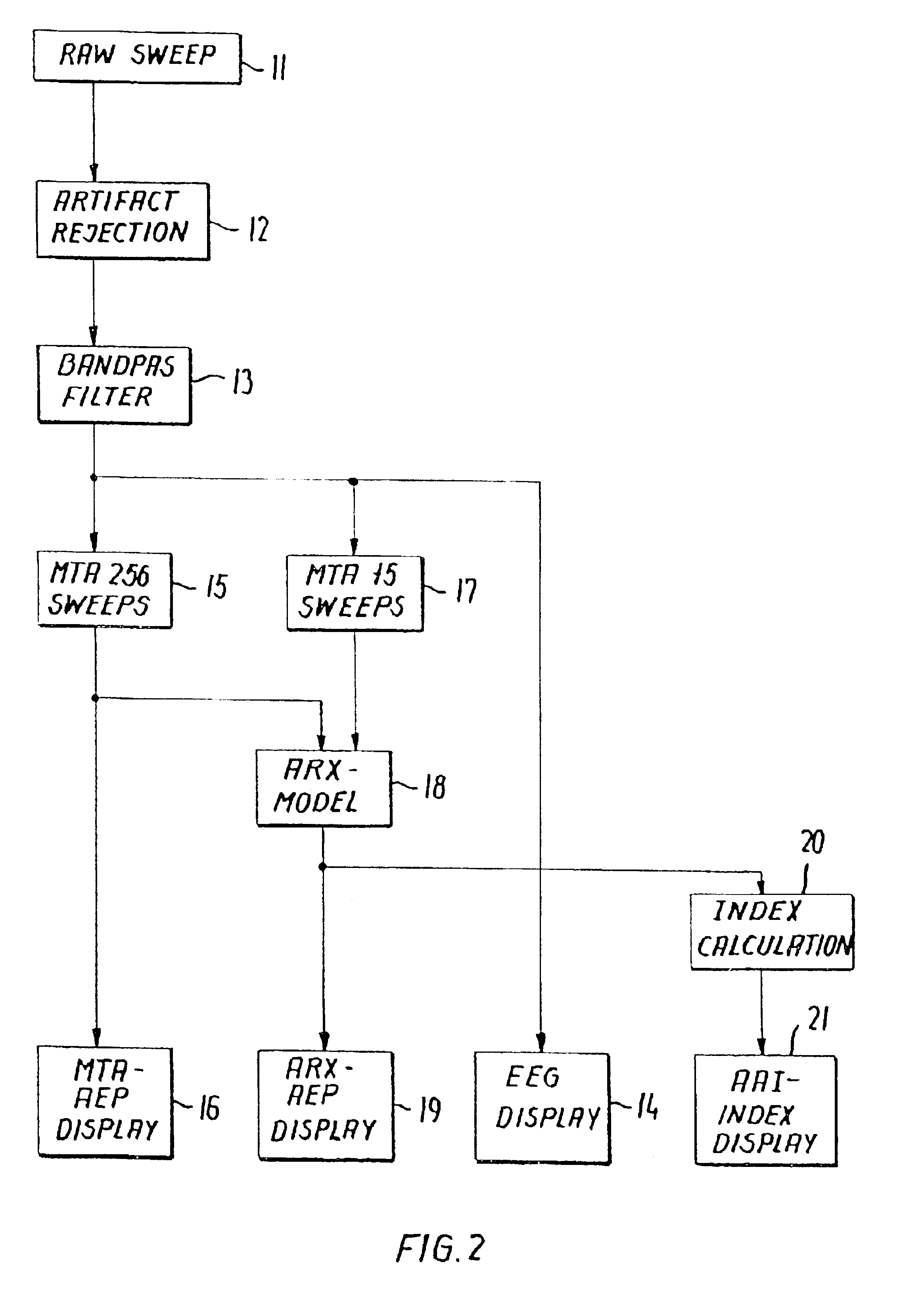Monitoring auditory evoked potentials
a technology of auditory evoked potentials and monitoring, applied in the direction of sleep inducing/ending devices, amplifiers, sensors, etc., can solve the problem of time-consuming process and achieve the effect of saving the resul
- Summary
- Abstract
- Description
- Claims
- Application Information
AI Technical Summary
Benefits of technology
Problems solved by technology
Method used
Image
Examples
Embodiment Construction
In FIG. 1 is schematically shown a system 1 for extracting the AEP (auditory evoked potentials) and for calculating an index, which is indicative of the depth of anaesthesia of a patient.
The patient 2 is subjected to repetitive sound signals, which are delivered to the patient by headphones, earphones or the like. These sound signals are in the form of “clicking” noise signals of short duration, approximately 1-2 ms, which are delivered to both ears of the patient, and which produces distinctive potentials, known as AEP or auditory evoked potentials in the electroencephalographic (EEG) response of the patient. The headphones and the equipment for producing the sound signals, e.g. a signal generator, are not shown in FIG. 1.
Electrodes, with which EEG-signals (electroencephalographic signals) are provided, are attached to the head of the patient 2. Three or more electrodes, e.g. scalp electrodes, may be used. If three electrodes are used, they are attached to the patient 2 at the foll...
PUM
 Login to View More
Login to View More Abstract
Description
Claims
Application Information
 Login to View More
Login to View More - R&D
- Intellectual Property
- Life Sciences
- Materials
- Tech Scout
- Unparalleled Data Quality
- Higher Quality Content
- 60% Fewer Hallucinations
Browse by: Latest US Patents, China's latest patents, Technical Efficacy Thesaurus, Application Domain, Technology Topic, Popular Technical Reports.
© 2025 PatSnap. All rights reserved.Legal|Privacy policy|Modern Slavery Act Transparency Statement|Sitemap|About US| Contact US: help@patsnap.com



